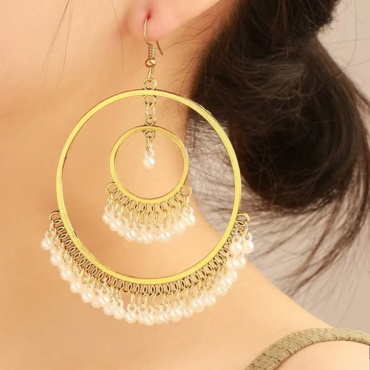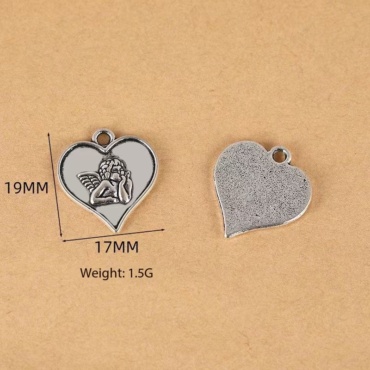Description
Floating Helix Piercing: A Unique and Stylish Trend in Body Jewelry
The floating helix piercing has quickly gained popularity among piercing enthusiasts for its distinctive and eye-catching design. This type of piercing is a modification of the traditional helix piercing, but it features a unique floating position on the upper ear cartilage, making it stand out among other piercings. Whether you’re a seasoned piercing lover or someone new to the world of body jewelry, the floating helix piercing offers a perfect blend of style, sophistication, and individuality.
What Is a Floating Helix Piercing?
A floating helix piercing is a unique type of ear piercing that is placed on the upper cartilage of the ear. Unlike the standard helix piercing, which is typically located at the edge of the ear’s outer rim, a floating helix piercing is positioned slightly inward or closer to the center of the ear. This gives the appearance that the jewelry is floating on the ear, hence the name.
The jewelry used for a floating helix piercing is often a hoop or a stud, and its placement allows it to be highly visible and stylish. The floating nature of the piercing gives it an ethereal, almost surreal quality, making it a favorite for those who want a piercing that is both elegant and edgy.
Benefits of a Floating Helix Piercing
- Aesthetic Appeal: The floating helix piercing offers a distinct, artistic look that is less common than traditional piercings, helping it stand out.
- Versatility: This piercing can be accessorized with various types of jewelry, including hoops, studs, and barbells, in materials like gold, silver, or titanium.
- Customizable Placement: Each floating helix piercing is unique because it can be placed slightly differently depending on the size and shape of the individual’s ear. This allows for a more customized look that suits each person.
- Minimal Pain: Compared to other cartilage piercings, the floating helix typically involves less discomfort due to its placement, though pain tolerance varies by individual.
- Healing Time: Like other cartilage piercings, the healing time for a floating helix piercing is approximately 6-9 months, depending on the aftercare.
Floating Helix Jewelry
One of the key features of the floating helix piercing is the jewelry that accompanies it. Jewelry options for floating helix piercings are diverse and come in many different styles:
- Hoops: Hoops are a popular choice for floating helix piercings due to their ability to emphasize the piercing’s floating nature. They come in various sizes and metals, from minimalist to more decorative designs.
- Studs: Small studs or crystals can also be used to create a more delicate look. They are perfect for those who prefer something understated.
- Barbells: Some individuals opt for barbells or straight barbells, which can be more subtle yet still fashionable.
- Gold or Silver: Jewelry for floating helix piercings is available in a variety of materials, including 14K gold, sterling silver, titanium, and even hypoallergenic options, which are ideal for sensitive ears.
Aftercare and Healing Process
After getting a floating helix piercing, proper aftercare is essential to ensure a quick and successful healing process. Here are some tips for caring for your floating helix piercing:
- Clean the Piercing: Use a saline solution or mild saline wound wash to clean the piercing twice a day. Avoid using harsh chemicals like hydrogen peroxide or alcohol, as these can irritate the wound.
- Avoid Touching: Do not touch or twist the jewelry unnecessarily, as this can cause infection or irritation.
- Sleep Position: Try to avoid sleeping on the side of the piercing during the healing process to prevent pressure on the jewelry.
- Avoid Pool or Hot Tub: Avoid submerging the piercing in pools, hot tubs, or other bodies of water to prevent bacterial infection.
- Patience: The healing process can take several months, so be patient and monitor the piercing for any signs of infection, such as redness, swelling, or unusual discharge.
Floating Helix Piercing: FAQs
- What is a floating helix piercing? A floating helix piercing is a type of ear cartilage piercing placed in a more inward position on the ear, giving the appearance that the jewelry is floating on the ear. It’s different from the traditional helix piercing, which is placed closer to the ear’s edge.
- Does a floating helix piercing hurt? The pain level varies from person to person, but generally, cartilage piercings like the floating helix are considered more painful than earlobe piercings. Most people report a quick sharp pain followed by mild discomfort.
- How long does it take for a floating helix piercing to heal? Healing time for a floating helix piercing can range from 6 to 9 months, depending on the aftercare and individual healing rates.
- What type of jewelry is best for a floating helix piercing? Popular choices include small hoops, studs, and barbells made of materials like titanium, 14K gold, or silver. It’s important to choose jewelry that is both aesthetically pleasing and made from high-quality materials to prevent irritation.
- Can I change my floating helix jewelry right away? It is not recommended to change the jewelry until the piercing has fully healed. Changing jewelry too soon can irritate the piercing or lead to infection.
- Is a floating helix piercing safe? Like all piercings, a floating helix piercing is safe as long as it is done by a professional piercer in a clean and sterile environment. Proper aftercare is essential to prevent infection.
- What are the risks associated with a floating helix piercing? Risks include infection, irritation, or migration of the piercing if proper aftercare is not followed. It’s important to monitor the piercing and seek medical advice if you notice any signs of infection.
- How do I clean my floating helix piercing? Clean your piercing twice a day with a saline solution or saline wound wash. Avoid using harsh chemicals, and don’t twist the jewelry while cleaning to reduce irritation.
- What should I do if my floating helix piercing gets infected? If your piercing shows signs of infection such as redness, swelling, or discharge, contact a professional piercer or a healthcare provider immediately. They can advise on the best course of action, which may include using antiseptic solutions or even removing the jewelry if necessary.
- Can I wear earphones or headphones with a floating helix piercing? It’s advisable to avoid wearing tight or ill-fitting earphones or headphones on the side of the piercing during the initial healing period to avoid pressure on the piercing. Once the piercing has fully healed, wearing earphones should not pose a problem.
Conclusion
A floating helix piercing is a stunning way to express your individuality while adding a fashionable element to your ear jewelry collection. With its unique floating appearance, customizable placement, and versatile jewelry options, this piercing is sure to stand out. However, as with all body piercings, it’s important to follow proper aftercare instructions to ensure a smooth and speedy healing process. Whether you’re new to piercings or a seasoned enthusiast, the floating helix piercing is a bold and stylish choice that is guaranteed to make a statement.



























Reviews
There are no reviews yet.